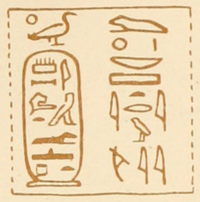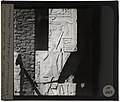| Sekhemre Khutawy Amenemhat Sobekhotep | ||||||||||||||||||||||||||||||||||||||||||||||||||||||||||||||||||||||||||||||||||
|---|---|---|---|---|---|---|---|---|---|---|---|---|---|---|---|---|---|---|---|---|---|---|---|---|---|---|---|---|---|---|---|---|---|---|---|---|---|---|---|---|---|---|---|---|---|---|---|---|---|---|---|---|---|---|---|---|---|---|---|---|---|---|---|---|---|---|---|---|---|---|---|---|---|---|---|---|---|---|---|---|---|---|
| Sobekhotep II, Sobekhotep I (depending on chronology) | ||||||||||||||||||||||||||||||||||||||||||||||||||||||||||||||||||||||||||||||||||
 Head of a statue, thought to represent Sekhemre Khutawy Sobekhotep, although other attributions have been proposed Head of a statue, thought to represent Sekhemre Khutawy Sobekhotep, although other attributions have been proposed | ||||||||||||||||||||||||||||||||||||||||||||||||||||||||||||||||||||||||||||||||||
| Pharaoh | ||||||||||||||||||||||||||||||||||||||||||||||||||||||||||||||||||||||||||||||||||
| Reign | At least three years, 1803–1800 BC or 1724–1718 BC | |||||||||||||||||||||||||||||||||||||||||||||||||||||||||||||||||||||||||||||||||
| Predecessor | Uncertain, Sobekneferu or Sedjefakare Kay Amenemhat VII | |||||||||||||||||||||||||||||||||||||||||||||||||||||||||||||||||||||||||||||||||
| Successor | Uncertain, Sekhemkare Sonbef or Khendjer | |||||||||||||||||||||||||||||||||||||||||||||||||||||||||||||||||||||||||||||||||
Royal titulary
| ||||||||||||||||||||||||||||||||||||||||||||||||||||||||||||||||||||||||||||||||||
| Father | Uncertain, possibly Amenemhat IV | |||||||||||||||||||||||||||||||||||||||||||||||||||||||||||||||||||||||||||||||||
| Born | after 1900 BC | |||||||||||||||||||||||||||||||||||||||||||||||||||||||||||||||||||||||||||||||||
| Died | before 1700 BC | |||||||||||||||||||||||||||||||||||||||||||||||||||||||||||||||||||||||||||||||||
| Dynasty | 13th Dynasty | |||||||||||||||||||||||||||||||||||||||||||||||||||||||||||||||||||||||||||||||||
Sekhemre Khutawy Amenemhat Sobekhotep was an Egyptian pharaoh of the early 13th Dynasty in the late Middle Kingdom.
His chronological position is much debated. In literature, Sekhemre Khutawy Sobekhotep is known as Sobekhotep II and Amenemhat Sobekhotep. Kim Ryholt (1997) makes a strong case for Sekhemre Khutawy Sobekhotep as the founder of the dynasty, a hypothesis that is now dominant in Egyptology. If so, he may be the first ruler with this name, making him Sobekhotep I. His double name may also be a filiation, Sobekhotep, son of Amenemhat.
Reign
We know almost nothing about his reign except what can be interpreted by archaelogical finds. He ruled at a time of political turmoil during the early Thirteenth Dynasty, where the order of succession is unclear. At Lahun, a papyrus indicate that he ruled not long after Amenemhat III. The Nile Level Records were also inscribed for a limited number of rulers of the late 12th and early 13th dynasties. However, the Turin King List column 7 placed him in the middle of the list if read as a sequence of successors. Consequently, some scholars believe the scribe made a mistake where he should be put at the top of that list. His double name Sobekhotep Amenemhat may be a filiation meaning "Sobekhotep, son of Amenemhat" indicating he was a son of Amenemhat III or Amenemhat IV. Amenemhat III is only known to have had daughters. An antiyant husband (regent) or grandchild (by the first rank daughter) may have laid claim on the throne.
Attestations
Sekhemre Khutawy Amenemhat Sobekhotep is attested by contemporary sources dating to the early 13th Dynasty.
In Year 1, he is attested on a papyrus at Lahun in the middle part of Egypt. Later, he is mainly attested by architectural elements in the 4th Nome of Thebes. His highest attested date is Year 4 according to Nile Level Records in Nubia.
Documents
Kahun Papyrus IV, Petrie Museum UC 32166
He is mentioned on the Kahun Papyrus IV. Written in hieratic text, it contains "a census of the household of a lector-priest that is dated to the first regnal year" of the king. The household includes a son of the lector-priest, and the papyrus records the birth of this son during a 40th regnal year of an unnamed king, "which can only refer to Amenemhat III." This establishes that Sekhemre Khutawy Sobekhotep reigned close in time to Amenemhat III, with the son still part of the household of the lector-priest.
Nile Level Records
Three Nile level records from Semna and Kumna in Nubia are also attributable to Sekhemre Khutawy Sobekhotep, the latest of which is dated to year 4, showing that he reigned for at least three complete years.
At Semna, a nile level record was made in Year 2 and Year 3. At Kumma, a nile level record was made in Year 4.
Architecture
A number of architectural elements bearing Sobekhotep's titulary are known: a fragment of a Hebsed chapel from Medamud, three lintels from Deir el-Bahri and Medamud, an architrave from Luxor and a doorjamb from Medamud that is now in the Louvre.
Medamud, Temple of Montu
Deir el-Bahri, Temple of Mentuhotep II

At Deir el-Bahri, Sekhemre Khutawy Sobekhotep added a relief to the Mortuarty Temple of Mentuhotep II.
Small finds

Smaller artifacts mentioning Sekhemre Khutawy Sobekhotep comprise a cylinder seal from Gebelein, an adze-blade, a statuette from Kerma and a faience bead, now in the Petrie Museum (UC 13202).
Non-Contemporary Attestations
The Turin King List 7:19 contains the entry: "The Dual King Sekhemra Khutawy Sobekhotep reigned x years ...". In the list he is predeceded by 7:18 Sedjefakare and succeeded by 7:20 by Khendjer. Some scholars believe the scribe made an error being interchanged with 7:01 Khutawyre Wegaf.
Burial
The tomb of Sekhemre Khutawy Sobekhotep has not been found.
Alleged tomb
See also: S 10 (Abydos)His tomb was believed to have been discovered in Abydos in 2013, but its attribution is now questioned. During a 2013 excavation in Abydos, a team of archaeologists led by Josef W. Wegner of the University of Pennsylvania discovered the tomb of a king with the name Sobekhotep. While Sobekhotep I was named as owner of the tomb on several press reports since January 2014, further investigations made it more likely that the tomb belongs to king Sobekhotep IV instead.
Theories
There is some dispute in Egyptology over the position of this king in the 13th Dynasty. The throne name Sekhemre Khutawyre appears in the Turin King List as the 19th king of the 13th Dynasty. However, the Nile level records and his appearance on a papyrus found at Lahun indicate that he might date to the early 13th Dynasty. In both monument types only kings of the late 12th and early 13th Dynasty are mentioned.
In the Turin King List, Khutawyre appears as the first 13th Dynasty king. Egyptologist Kim Ryholt maintains that it is possible that the writer of the list confused Sekhemre Khutawy with Khutawyre, the nomen of Wegaf.
The identification of any mention of Sekhemre Khutawy is difficult, as at least three kings are known to have had this name: Sekhemre Khutawy Sobekhotep, Sekhemre Khutawy Pantjeny and Sekhemre Khutawy Khabaw.
His double name Amenemhat Sobekhotep may be a filiation meaning "Sobekhotep, son of Amenemhat". It has been suggested that Sobekhotep was a son of the penultimate pharaoh of the 12th Dynasty, king Amenemhat IV. Therefore, Sobekhotep may have been a brother of Sekhemkare Sonbef, the second ruler of the 13th Dynasty. Other Egyptologists read Amenemhat Sobekhotep as a double name, these being common in the Twelfth and Thirteenth Dynasty.
References
- ^ K. S. B. Ryholt, The Political Situation in Egypt during the Second Intermediate Period, c.1800–1550 BC, Carsten Niebuhr Institute Publications, vol. 20. Copenhagen: Museum Tusculanum Press, 1997.
- Thomas Schneider after Detlef Franke: Lexikon der Pharaonen, p. 255
- Darrell D. Baker: The Encyclopedia of the Pharaohs: Volume I – Predynastic to the Twentieth Dynasty 3300–1069 BC, Stacey International, ISBN 978-1-905299-37-9, 2008, p. 443
- ^ "Sekhemre Khutawy Sobekhotep, the Petrie Museum". Digitalegypt.ucl.ac.uk. Retrieved 10 January 2014.
- ^ Ryholt 1997:315
- London, Petrie Museum UC32166
- Kahun papyrus IV, Petrie Museum
- "UC 32166 | Persons and Names of the Middle Kingdom".
- Nicolás Grimal: A History of Ancient Egypt, Wiley-Blackwell, 1994, pp 183–184
- Sudan National Museum 34370
- ^ Elsa Yvanez (2010) Rock Inscriptions from Semna and Kumma
- Édouard Naville: The XIth dynasty temple at Deir el-Bahari, PART II, (1907)available copyright-free online
- Percy Newberry (1908): Scarabs an introduction to the study of Egyptian seals and signet rings, available online copyright free see plate XLIII num 3
- New York, Metropolitan Museum of Art MMA 30.8.319
- Egyptian Museum at Cairo, JE 67944; forgery? Ali Hassan Eid (2022) The Journey from Authenticity to Forgery: A Case-study on an Adze-blade (Egyptian Museum Cairo JE 67944) of the Thirteenth Dynasty
- Faience bead of Sekhemre Khutawy, Petrie Museum
- "Turin king list: Column 7".
- ^ Josef W. Wegner: A Royal Necropolis at Abydos, in: Near Eastern Archaeology, 78 (2), 2015, p. 70
- "Giant Sarcophagus Leads Penn Museum Team in Egypt To the Tomb of a Previously Unknown Pharaoh". Penn Museum. Retrieved 17 January 2014.
- "King Sobekhotep I Tomb discovered in Sohag". State Information Services. 7 January 2014. Retrieved 8 January 2014.
- Stephen Adkins (7 January 2014). "Pennsylvania Researchers Discover Tomb of Egypt's First King of 13th Dynasty". University Herald. Retrieved 8 January 2014.
- "US diggers identify tomb of Pharoah [sic] Sobekhotep I". Times Live. South Africa. 6 January 2014. Retrieved 8 January 2014.
- Stark, Florian (7 January 2014). "Pharaonengrab aus apokalyptischen Zeiten entdeckt". Die Welt (in German). Retrieved 8 January 2014.
- Dodson, Aidan and Hilton, Dyan. The Complete Royal Families of Ancient Egypt. Thames & Hudson, 2004. ISBN 0-500-05128-3
- Stephen Quirke: In the Name of the King: on Late Middle Kingdom Cylinders, in: Timelines, Studies in Honour of Manfred Bietak, Leuven, Paris, Dudley, MA. ISBN 90-429-1730-X, 263-64
Further reading
- K. S. B. Ryholt, The Political Situation in Egypt during the Second Intermediate Period, c.1800–1550 BC, (Carsten Niebuhr Institute Publications, vol. 20. Copenhagen: Museum Tusculanum Press, 1997), 336, File 13/1.
| Preceded byuncertain Sobekneferu or Sedjefakare |
Pharaoh of Egypt Thirteenth Dynasty |
Succeeded byuncertain Sonbef or Khendjer |






